The Sommeliers of Everything
What realm of taste doesn’t have its certified master? These days, even our smallest pleasures require expert advice.
My training as a honey sommelier at the American Honey Tasting Society culminates with eight wineglasses filled with various honeys, lined up from light to dark. My instructor, Carla Marina Marchese, tells me that when we taste honey, we don’t do the ceremonial swirl—the wine expert’s ritual—before we sniff. Honey sommeliers smear. “Smear it on the sides of the glass like this,” she says, using a tiny plastic spoon. Once the honey is smeared, I can stick my nose in the glass to properly evaluate the aroma, then spoon a dollop onto my tongue.
Marchese is leading me through an abbreviated version of her $795, four-day honey sensory certification course. To be clear, this is a seminar specifically in tasting—not in beekeeping or honeymaking. The American Honey Tasting Society exists upstairs from Marchese’s Red Bee honey shop, in a beautiful, rustic barn in Weston, Connecticut, heated on this day by a wood-fired stove. We’ve already covered the Honey Connoisseur Aroma and Tasting Wheel, the Honey Connoisseur Color Guide and the basics of sensory analysis. The preparatory advice is pretty much the same dogma as for wine: Don’t drink coffee. Don’t brush your teeth. Don’t use hand lotion. Don’t wear perfume or cologne.
To illustrate how important the olfactory sense is, Marchese earlier asked me to hold my nose and gave me something granular to put on my tongue. At first, it just felt grainy and sweet. Yet once I unplugged my nose, I experienced a rush of cinnamon flavor. As further practice, we sniffed little vials of typical honey aromas, similar to a kit other sensory experts use. I was proud of myself for identifying scents of mint, peach and lily. But others stumped me. Nutmeg? Wrong, hazelnut. Tea? No, hay. Truffle? Sorry, mushroom.
Now, we work our way through what she calls “single-origin” honeys: a straw-colored, delicate acacia honey from Bulgaria; a smooth, surprisingly savory orange blossom honey from Florida; a pleasantly strange, brick-colored honey from Maine blueberry blossoms, with complex aromas of cheese and tomato paste and flavors from dried fruit to umami. “This is not your clover honey from a teddy bear,” Marchese says. “That honey in the teddy bear is just sugar water.”
I’m embarrassed to admit it to Marchese, but I’m exactly the type of consumer who keeps a plastic teddy bear in the pantry. As we taste a strange, dark buckwheat honey, with flavors like malty beer and pumpernickel and intensely funky, barnyard aromas—“horse blanket,” she says—the world of honey suddenly seems vast and overwhelming. Yesterday, I didn’t give honey a second thought. Today, I need to know everything.
Marchese tells me that when she detects a metallic taste in the honey, she knows the beekeeper has likely used rusty equipment. When she tastes too much smoky flavor, she knows the honey came from an inexperienced beekeeper who uses too much smoke because he’s afraid of bees. Which is to say Marchese’s palate is so finely tuned that she can literally taste the beekeeper’s fear in a smear of honey.
In 2000, Marchese left a career as an illustrator and product designer in New York, moved to Connecticut and took up beekeeping. “This whole world opened up to me,” she says. “I started to see honey as a parallel to wine.” She worked for a time at a wine distributor and began going to honey festivals, particularly in Italy, where honey is a much bigger deal. She also began taking honey courses and eventually moved to the Italian beekeeping institute in Bologna for advanced certification. Eventually, Marchese became a member of the Italian National Register of Experts in the Sensory Analysis of Honey—the first American to be accepted.
Expert in the sensory analysis of honey? “For lack of a better word, it’s a honey sommelier,” she explains. “Of course, right now in the U.S. there are no jobs as a honey sommelier.” Therefore, she had to create her own.
“People don’t understand how complex honey is,” she says. “They think honey is just honey. For people who have never done this, it’s emotionally and physically draining. We’re not used to truly tasting our food and really thinking about it.”
Perhaps you are someone who thinks honey is just honey. Or tea is just tea. Or olive oil is just olive oil. Or water is just water. Or a cigar is just a cigar. Or mustard is just mustard. If so, you’re likely skeptical of a honey sommelier, a tea sommelier, an olive oil sommelier, a water sommelier, a cigar sommelier or a mustard sommelier.
But over the past decade, there’s been a creeping wine-ification in every realm of gourmet endeavor. Now, in our era of hyper-credentialism, there’s almost no sphere of connoisseurship without a knowledgeable, certified taste expert, someone who’s completed serious coursework and passed an exam. A two-day tea sommelier certification course (followed by eight weeks of home study) from the International Tea Masters Association costs $1,725. A five-day olive oil sommelier certification program in New York costs $2,800. A nine-day water sommelier certification program at the Doemens Academy in Germany costs more than $3,000 (travel not included).
These programs prepare you to be a taste authority, a sensory expert, an arbiter and evangelist in the field, though you’re likely not producing anything. Even so, the certifications are in demand. What is it about this era that values such mastery over taste? Were we all truly so clueless and naive about these matters once upon a time? Has life become so fraught and complicated that even decisions over our smallest pleasures now require expert intervention?
I’ve made a career of writing about food and drink, tasting and rendering my opinions and recommending things. I’ve taught my share of classes for both consumers and trade. All of this with no certification or diploma whatsoever.
For a long time, it didn’t seem to matter, but over the past few years, when I published or taught, people curiously began to assume I had some sort of certification and seemed surprised when I revealed I did not. As I finished my third drinks book, I started to feel a twinge of impostor syndrome. I was a sommelier of nothing. Perhaps I needed a few certifications to keep pace with the crowd.
Since I spent a year writing a book about cider, the first credential I sought out was Certified Cider Professional (or CCP), a title created by the American Cider Association. I attended an introductory seminar on the CCP Level 1 exam at CiderCon in the winter of 2018. One afternoon on a whim—without any formal study—I decided to log in to the cider association website, pay $75 and take the exam. There were 60 questions on apple history, apple classifications and genetics, cider making techniques, styles of cider, detecting flaws, and food pairings with cider. I submited my answers, then found out instantaneously that I’ve gotten 89 percent correct—a passing grade. It took me 37 minutes 47 seconds to complete the exam, which included the interruption of a 15-minute work call. I am now proudly a Level 1 Certified Cider Professional. I received a felt CCP patch in the mail—one that I might have proudly ironed onto my acid-washed jean jacket back in the ’80s. Within months, I was teaching cider classes to candidates who also hoped to pass the CCP Level 1 test. (If I want to someday become the cider version of a sommelier, a pommlier, I will have to pass Level 2).
I was embarrassed to admit how effortlessly I attained this certification. One evening, I found myself at Anxo Cidery, the epicenter of Washington, DC’s cider scene. Anxo required most of its staff to become CCPs, and I was chatting with two bartenders about how I’ve passed the exam. They both also recently passed. “That exam was so easy,” one bartender told me. “I took it when I was drunk.”
“I took that exam while I was on the toilet,” said the other.
Chagrined, I became obsessed with acquiring another certification, in another realm of taste. I pay $120 to Ecole Chocolat, an online chocolate school, to enroll in its Mastering Chocolate Flavor certificate program. I enjoy good chocolate, and I was fascinated by the complexity and craftsmanship of chocolatiers on a trip to Brussels a few years earlier. I understood that chocolate can be “single origin” and demonstrate the concept of “terroir” just like wine and coffee—and honey. So I paid my money, unlocked the study material, and was immediately overwhelmed with a dump of information: the origins of chocolate, cacao and cacao trees; how flavor works, both physiologically and in chocolate; the elements of chocolate flavor.
We were encouraged to buy a textbook, co-written by Ecole Chocolat’s founders, titled Raising the Bar: The Future of Fine Chocolate. The course was to be self-directed, with weekly tasting assignments—the first being a general exercise on sweet, sour, salty, bitter, fatty and umami, and the others comparing two or more chocolate bars. Students post to a group forum, with feedback from our Flavor Coach. “My primary question is how to classify ‘what is good,’ ” posts one of my classmates. To which our Flavor Coach replies: “Many folk in the industry have their own opinions about what ‘good’ chocolate is. Here’s mine (for the moment): ‘Good’ is a chocolate with no overpowering faults that is pleasant and sparks your interest. That leaves things pretty wide open, doesn’t it?”
There was no exam in Ecole Chocolat’s Mastering Chocolate Flavor program, and that disappointed me. Basically, you read whatever of the information you wanted, worked at your own pace, participated in the forums, and if you completed at least five of the seven exercises, you received a certificate. Where are the bragging rights in that? I found this self-directed approach to be a little too lightweight; it didn’t really motivate or challenge me. So allow me to confess: I am a chocolate-school dropout.
Then I learned about the American Cheese Society’s T.A.S.T.E. Test, which launched in the summer of 2018. Passing this exam would confer the title of Certified Cheese Sensory Evaluator (cheese sommeliers don’t call themselves sommeliers). Cheese felt like something I could handle. I’d spent time on assignment in Bra, Italy, reporting from the Slow Food Cheese event, tasting from among hundreds cheese makers. The founder of Slow Food declared the event to be “the beating heart of cheese” and those of us attending the “cheese intelligentsia.” Well, as a member of the cheese intelligentsia, surely I could pass the T.A.S.T.E. Test?
“You can’t study the day before and take this test,” Jane Bauer, the certification manager for the American Cheese Society, told me. The professionals taking this test need at least 4,000 hours of work experience in the cheese business. “There’s a difference between certification and certificates. A lot of people try to call things certifications, and they’re not.”
I asked Bauer if cheese is any more complex than wine. “Oh yes,” she said. “With cheese, every day is different. There’s a new vintage every day depending on what the animal ate the day before. Some cheesemakers have 365 vintages per year.”
Despite my lack of the requisite hours, Bauer agreed to let me sit for the three-hour exam, held in a hotel ballroom in Pittsburgh during the society’s annual conference. I arrived along with 50 other candidates and was shown to my table, set with a clipboard of evaluation sheets for a dozen categories of cheese—from soft-ripened to cheddars to blue mold to goat cheese to washed rind—as well as cups of aroma samples, unidentified liquids marked A to J that I would have to sniff and identify blind. The proctor told us that photos and posting on social media were prohibited. “Though there’s not much in your phone that can help you now,” he said. Along the back wall of the ballroom stood a team of cheesemongers cutting samples, where we’d go to get our cheeses to evaluate.
The aroma part seemed straightforward: I believe I identified garlic, hazelnut, green apple, horseradish, smoke and one that smells “butyric” (think baby vomit). I guessed on others, including one liquid I think is either buttermilk or “old milk”—which I clumsily spilled all over my table.
When I moved to the evaluation portion, though, I immediately realized I was in over my head. Any hubris I possessed cracked when I popped my first sample, a soft-ripened cheese, into my mouth. I chewed. It just tasted like…soft cheese. Yet I was supposed to evaluate this based on 70 characteristics and flaws in four categories (appearance, aroma, texture and flavor). And not just the presence of, say, a nutty or herbal aroma or an animal or grassy flavor, but “much too little,” “too little,” “just about right,” “too much” or “much too much.” At the table in front of me I saw another candidate spit into a bucket. Wait a minute! I thought. Are we supposed to spit cheese when we taste it, like wine? I spit my soft-ripened cheese into the bucket on my table (gross, to be honest). Still, I gamely trudged on for nearly three hours. When I got to the evaluation sheet for Emmental-style (i.e., Swiss) cheese, there was a category for “Eye Development,” with characteristics such as blind, underset, irregular and dead/dull eyes. Wait, cheese has eyes? When I approached the cheesemongers for a sample of cheddar, I stole a glance at the clipboard of a bearded guy in a tropical shirt and Birkenstocks standing next to me. He marked “seamy” on one of his score sheets. What does it mean to have a seamy cheese? I was so out of my league, I didn’t even know what I didn’t know.
After I finished, I ran into Bauer outside. “Are you okay? You’re looking at little…”
“Glazed?” I said.
“Yes, glazed,” she said. “That’s the word I was looking for.”
A couple of months later, I was not surprised to learn that I did not pass the exam and that the title of Certified Cheese Sensory Evaluator eluded me. Humbled, I realized that if I want to gain some certified cheese expertise, I will have to begin at a much lower level and work my way up.
Most taste-expert programs are modeled, in some fashion, on the venerable wine sommelier certifications; none have deviated radically from these. The term “sommelier” technically means a “wine waiter” or “wine steward,” a restaurant position dating to 18th-century France.
“My purist definition of a sommelier is someone who works in hospitality, who serves wine in a restaurant,” said David Wrigley, who was international development manager of the Wine & Spirit Education Trust (I spoke with Wrigley a few summers ago in Washington at an event called SommCon). There, the WSET presented its program to potential students alongside three rival organizations: the Society of Wine Educators, the Institute of Masters of Wine, and the Court of Master Sommeliers. All of these programs offer a ladder of advancing levels, from introductory through master, increasing in price and commitment. WSET Level 1, for example, begins at just under $400 for six hours of course study, rising to Level 4. Taking from 18 months to three years, Level 4 requires more than 500 hours of study to complete and costs more than $4,000, a cost that can easily double as thousands more are spent on travel and acquiring bottles to taste. The WSET’s enrollment in the U.S. grew by 15 percent in 2022, with more than 23,000 students currently. Worldwide there are more than 100,000 candidates.
Wine education and the role of the sommelier are so culturally mainstream that it’s perhaps inevitable that other gourmet products would seek a similar patina of sophistication. “A sommelier means someone who holds the knowledge, and I’m definitely the one who holds the knowledge of mustard,” said Harry Lalousis, a mustard sommelier who works for Maille, a French producer of Dijon mustard. “I don’t say that I’m a mustard sommelier for fun. I don’t think there’s anyone who can ask me a question about mustard that I cannot answer.”
While we talked, Lalousis gave me a thumbnail history of mustard that stretches back to the Romans, with Dijon mustard being created by 14th-century monks in Burgundy. “These were the same monks who designated the grand cru and premier cru vineyards for Burgundy wines that are still used today,” he said. Lalousis told me that in 18th-century France, it was believed one must eat pungent mustard with meat to keep from falling ill. Maille established itself as the royal mustard because it didn’t make courtiers sweat as they ate it. “They all wore makeup and didn’t want it to come off in front of the king,” he said.
Lalousis had been managing Maille’s retail boutique in London when he was tapped for his expertise. “My boss told me, ‘I think you’ve got a calling. You’ve got a love for mustard.’ ” He was sent to the factory in Dijon for six months of training and learned “everything there was to know about mustard.” As far as Lalousis was aware, he’s the only mustard sommelier in the world. That’s not to say, however, that he is the first mustard sommelier in history. “We had a mustard sommelier in 1747 when we opened a store in Paris,” he said. At that time in Paris, Dijon mustard was not well known. “Our founder wanted people to know how to use Dijon mustard. He wanted to show people that it was an ingredient and not just a condiment.” And if Lalousis has his way, he will not be the last. He’s developing an educational program that will certify future mustard sommeliers about types of mustard seed, harvest techniques, chemical compounds in mustard, regional differences, levels and qualities of pungency, various pairings and uses, and what Lalousis calls “the culture of mustard.”
Wine professionals, unsurprisingly, bristle at the way in which the word “sommelier” has been co-opted by other industries. “ ‘Sommelier’ is now a widely abused term,” said WSET’s Wrigley. Still, Wrigley diplomatically allowed that in the wider connoisseurship of food and drink “all education is good as long as it comes from a good source and is of good quality.”
What about a honey sommelier or a cigar sommelier or a mustard sommelier? I asked. “Well, I’m sure they’re very important to those producers,” he said, with a smirk. “Anyone who makes a product with any degree of care wants its end users to understand the level of quality. And also why it’s more expensive.”
That is certainly true—and that’s why “education” becomes a slippery term in the world of taste. The sommelier’s job is to monetize the educated palate. In wine, that might mean persuading someone to upgrade from a bottle that’s $50 on a list to one that’s $70. The cheese sommelier might try to sell a customer on a more expensive artisan, aged Gouda rather than the basic Gouda in red wax. For the honey sommelier, it may be about persuading someone to upgrade their $4 honey in a 12-ounce plastic bear to a buckwheat honey that’s $12 for four ounces. For the mustard sommelier, it’s about explaining why you’d want to pay for real Dijon mustard and not the cheap imitations you find in the supermarket.
With taste education so intertwined with commerce, some public skepticism over such certifications is understandable. A few years ago, a cheating scandal rocked the Court of Master Sommeliers, which had to invalidate the tasting portion of its hallowed master sommelier diploma exam. One of the proctors had leaked the exam’s most sacred secrets: the identity of the wines that the master’s candidates were supposed to taste blind.
For years, Tobacconist University was run in a cigar shop called A Little Taste of Cuba in downtown Princeton, N.J., in the shadow of a slightly more famous Ivy League university (it’s now based in Port Charlotte, Florida). Jorge Luis Armenteros founded Tobacconist University in 1996, at the height of the 1990s cigar craze, originally as training for his shop staff. Soon, others in the industry wanted the same knowledge.
Now, most of the coursework is online at a cost of $100 to $1,000, depending on experience. Tobacconist University has around 500 Certified Retail Tobacconists, with another 1,000 apprentices studying for the certification. At the top end of the program is Certified Master Tobacconist, which includes 100 hours of work in tobacco fields or cigar factories and an “academic contribution,” such as a paper or article. There are only 15 Certified Master Tobacconists.
“There’s a big difference between a guy that likes to sit around all day and talk about sports and cigars, and a real tobacconist,” Armenteros said. “Our ideal customer is not a guy that just wants to chomp on a Swisher Sweet.”
When I visited Armenteros at the shop in Princeton, he guided me into the humidor, amid shelves of boxes and hundreds of cigars. “The most fulfilling, exciting thing we do,” he said, “is when you take a customer to another level. When you open up their enjoyment. That’s the greatest thing a tobacconist, or any sommelier, can do.” He talked excitedly about the differences among Nicaraguan, Dominican and Cuban tobacco, wrappers grown in Connecticut or Ecuador, the size or “ring gauge,” from skinny lancero to coronas to robustos to thick Churchills. A Padrón cigar, from Nicaragua, “is a steak, a wagyu.” Meanwhile, another cigar from the Dominican Republic “is like fish. It’s an elegant, delicate cigar.” We compared what spirits to pair with cigars, and both of us agreed that describing flavors is not easy. “Not just in cigars,” he said, “but in any world of organoleptic delicacies.” He pointed to some cigars he’d been aging for close to a decade, and asked if cigars can age like wine. “Fuck yeah,” he said.
The world of cigars is easily as complex as whiskey or cheese or chocolate, but it faces an obvious challenge. “Our industry suffers from a stigma,” Armenteros said. “We don’t have any of the prestige of wine or Scotch, yet drinking those are just as dangerous.” Because of this, the cigar consumer is quite different from those of other gourmet products. “The cigar smoker is a very independent-minded person,” he said. “It takes a certain individualism. You need to have, let’s say, some balls to smoke a cigar. This type of person has strong opinions. We work with a lot of strong characters in this business.” Armenteros believes an educated, certified expert helps add a level of sophistication.
“Anyone can pontificate an opinion, and that happens a lot in the world of taste,” he said. “It’s easy to say you’re a cigar expert or a wine expert. People throw around the term ‘sommelier’ all the time.” Armenteros said that back in 1996, he considered using “sommelier” before settling on “tobacconist.” “The word ‘sommelier’ is so sexy and has so much brand value. It used to mean something. Now it’s a marketing gimmick.” Still, Tobacconist University calls its most recent certification the Cigar Sommelier Tobacconist, geared toward people working in the hospitality industry.
I realize just how widely “sommelier” has been thrown around when I visited a hot sauce sommelier at a hot sauce boutique called Heatonist in Brooklyn (they also have a location in Chelsea Market). I don’t know what a hot sauce sommelier is supposed to look like, but Noah Chaimberg, with fiery red hair and a red beard, fit the bill. I met him at the tasting bar of Heatonist, where we sampled a dozen or so of the hundreds of hot sauces he sells. Chaimberg says he’s likely tasted 200 hot sauces for every one on his shelves. Apparently lots of people have jumped into the “craft hot sauce movement,” and he receives at least a dozen new products each day. “It’s a lot like craft beer was in the 1980s,” he said. “People start tinkering at home. Then they end up selling at farmers markets, fancy food shows, and hoping to quit their day jobs.”
Chaimberg slid on black latex gloves and grabbed what looked like a giant eye dropper. He put a droplet of a green sauce, made from organic serrano peppers by a company called Small Axe Peppers in the Bronx, on a cardboard tasting spoon and offered it to me. “How’s the heat on that?” Chaimberg asked. “On a scale of one to 10.” I tell him it’s about a four for me. “I’d use this one on Mexican food,” he told me. “Or eggs.”
After that, it got hotter. A yellow one from Scotch bonnet peppers that’s about a six, a delicious Barbados-style pepper sauce made with mustard and having a molasses-like taste, a barbecue-style sauce from San Antonio made with ancho and morita peppers, a spicy peanut butter made from a traditional Haitian recipe, and a floral, fruity habanero sauce from Japan made with Citra hops and a bit of mango. After a half-dozen sauces, my palate became pretty fatigued. “If you push yourself past your comfort level, your brain’s not going to care about the taste,” Chaimberg told me.
Hot sauce connoisseurship has definitely changed over the past two decades. “Hot sauce used to be a macho thing. Fifteen, 20 years ago, I call that the Insanity Era. There was this arms race,” he said. These days, people are willing to spend more money than they would on a basic bottle of Tabasco. “When people get that education, they feel more confident investing in better hot sauce,” he said. “It’s just like with wine. Someone’s not going to buy a $200 bottle without some education.”
I asked Chaimberg if he ever planned to offer a certificate program to train future hot sauce sommeliers. Customers have asked. “But we don’t want it to be like that,” he said. “I think hot sauce is an industry that has a culture that’s a little more rock-and-roll. They just like to have fun.”
“But a hot sauce sommelier’s opinion means more than others’, right?” I asked.
“Yes,” he said with a smile. “And I like it that way.”
Humbled by my failure of the American Cheese Society’s T.A.S.T.E. exam three months earlier, I decide to set my sights lower and start my cheese education at the beginning. I pay $850 to attend a three-day, in-depth Cheese Boot Camp at Murray’s Cheese in New York’s Greenwich Village. The course begins on a Friday evening, with unlimited wine being poured. About two dozen students from all across the country crowd into an upstairs classroom. A number of people work in the cheese business, in sales or production, and some are opening their own cheese shops. There is one Master of Wine, a few chefs and one couple who tell all of us that they just love cheese so much that they’re spending their wedding anniversary at Cheese Boot Camp.
“We want to get beyond ‘yummy’ and ‘delicious,’ ” says instructor Caitlin O’Neill, a Certified Cheese Professional. The first step we take is to plug our noses—the same sensory-analysis exercise we did in my honey-tasting instruction. We place a piece of mozzarella on our tongues, which at first simply feels gooey and salty, and then a rush of smoky, buttery flavor comes on once I unplug my nose. We learn the basics of cheesemaking and the differences between the milks of cows, goats, sheep and water buffalo (which is “almost the texture of white paint”). We taste 15 cheeses, each of which represents a specific category: fresh, bloomy, washed, Alpine, Gouda, uncooked, thistle, cheddar, grana, blue. As O’Neill explains each category, I start to feel ridiculous for ever thinking I could have skipped this foundational step in my cheese education before sitting for an advanced exam.
We will come back to this classroom on Sunday to learn how to properly wrap cheese and how to properly pair cheese with beer and wine. But on Saturday morning the class meets at Murray’s facility in Queens, where we listen to a three-plus-hour lecture from Murray’s assistant cavemaster Krista Jacobsen, who holds a PhD in dairy sciences. As we taste 13 more cheeses, we learn about the chemistry of milk, some basics of animal management, the anatomy of a ruminant’s stomach, peak lactation, the role of microbes, milk fats, pasteurization, acid coagulation vs. enzymatic coagulation, starter cultures, curds and whey, the biochemistry of ripening Camembert. There are more topics, but those are the ones I vaguely understand. “Cheese is the controlled rotting of milk,” Jacobsen says. “We’re still learning what’s going on in there.”
Considering that the last time I took a hard science class was when I received a C-plus in high school chemistry, believe me when I tell you I had trouble keeping up. Luckily, the exam we will take in a few weeks—to receive our course certificates—will be open-notebook, and we are provided a glossary and all the pages of Jacobsen’s PowerPoint presentation.
After lunch, there is a tour of Murray’s caves, where the cheese ages. Then we’re led through the tasting of eight more cheeses by Tyler Frankenberg, the company’s customer experience manager, also a Certified Cheese Professional. This tasting is about comparing variations in cheesemaking: the differences between cheese near the rind vs. the tip, washed rind vs. ash, unaged vs. aged (“older doesn’t necessarily mean better,” we’re told). At one point we compare two versions of a funky pasteurized sheep’s milk cheese called Hollander with an aroma that people describe as earthy, mineral, “like mom’s basement” and even redolent of ammonia. “With this one, the bark is worse than its bite,” Frankenberg says.
“It smells like a sweaty sock,” says one student.
“Well,” Frankenberg says, “as we get deeper into this, we have to differentiate funk. There’s a difference between a freshly sweaty sock and this, which is an old sock you’d find under the bed a week later.”
As the class chuckles over that distinction, Frankenberg reminds us: “Remember, taste is always subjective. No matter if a professional tells you, ‘This tastes like wet slate from the Loire Valley.’” I’ve heard the same sentiment expressed by almost every taste expert I’ve visited. And yet, every one of these experts has a vested interest in taste being way more codified than subjective.
Indeed, what the rise of specialized taste education, the cult of sensory analysis, and the wine-ification of everything means is that taste is becoming more and more codified all the time. There are good tastes and bad tastes; not only that, there’s a growing caste of gatekeepers in every field who are keeping score on what tastes great, middling and flawed. Maybe this is what morality or philosophy looks like in an increasingly post-religious, post-intellectual, materialistic United States. We are a people in need of an authority, a higher voice, some guidance—even if it comes from behind the cheese counter. Maybe, for many affluent Americans, the sommeliers of everything represent something shaman-like. Listen to me. I am your one true sommelier.
If that’s the case, it would be wise to remember two things. First, the old koan: If you meet the Buddha on the road, kill him. Second, what Jorge Luis Armenteros told me in his cigar humidor: “This is the life of human beings. We invent things that bring us pleasure. I wish tasters would be more humble. But humility doesn’t sell.”

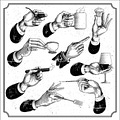

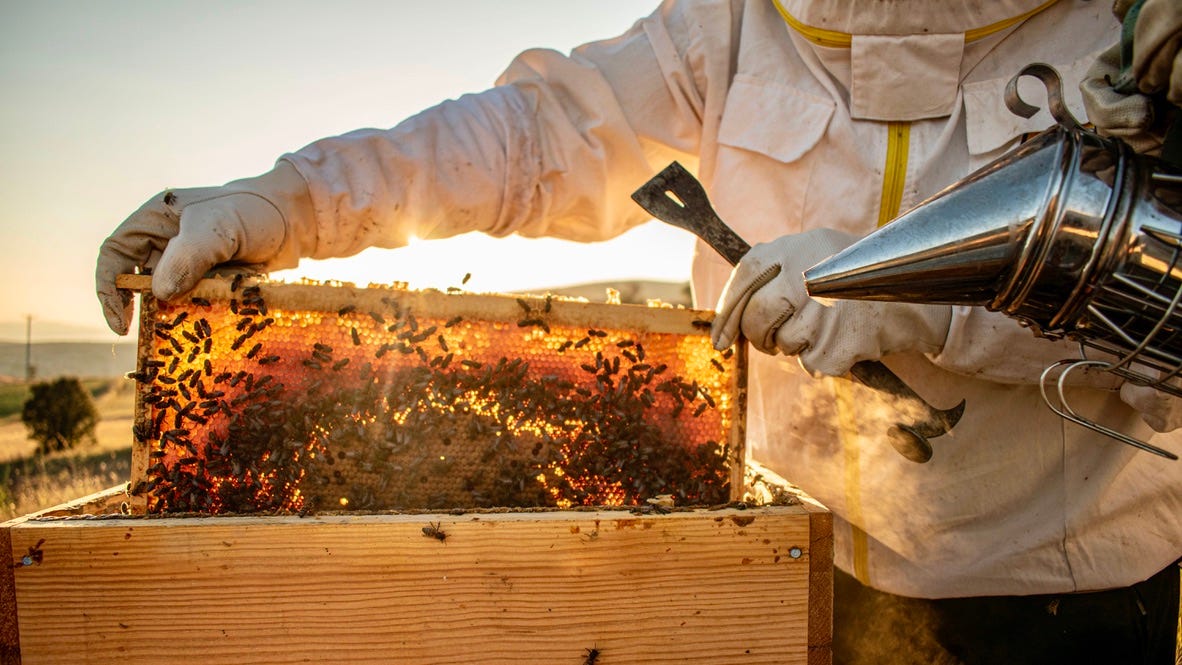
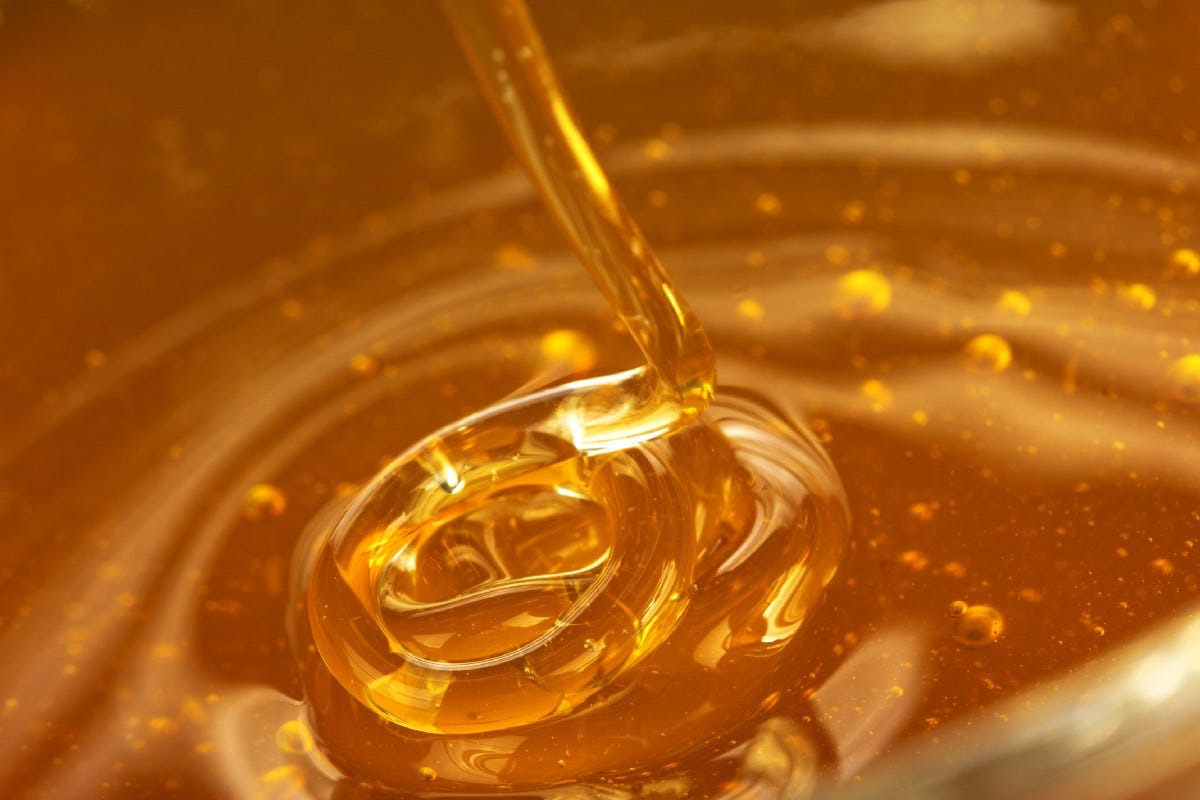
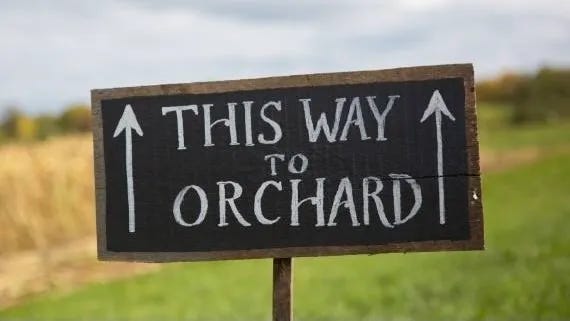
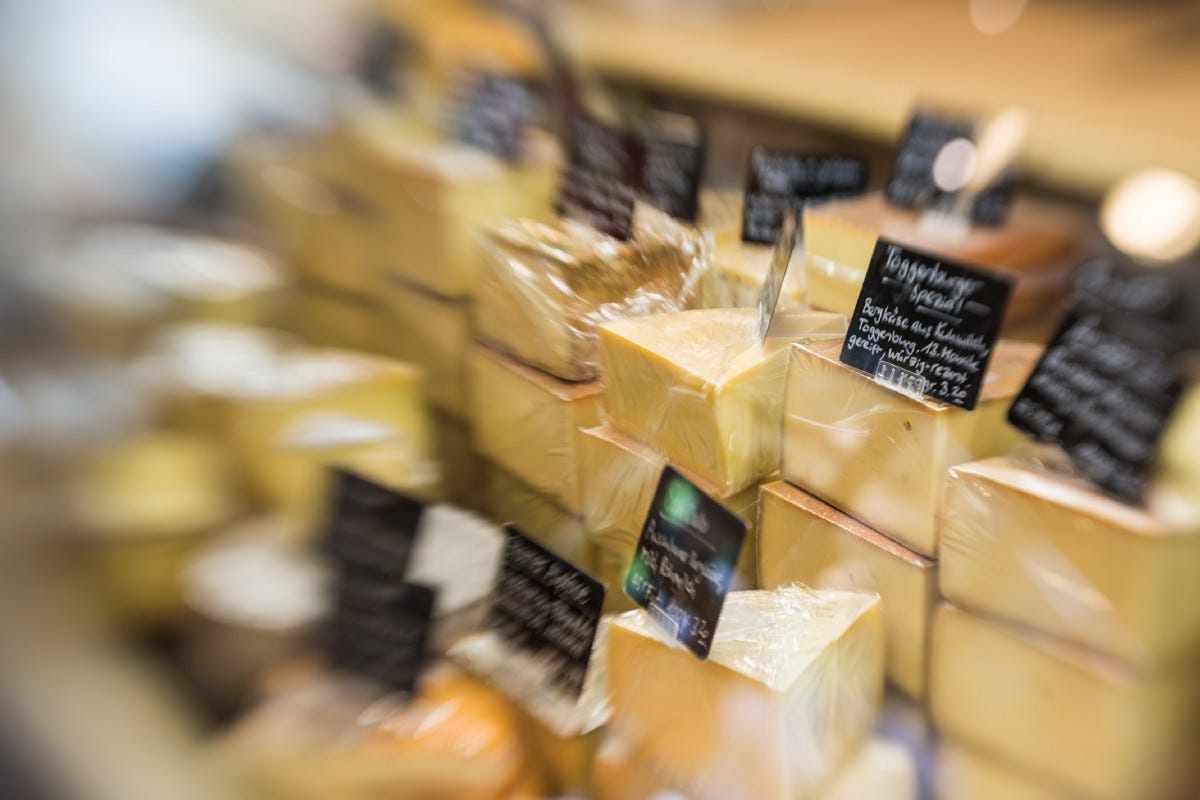
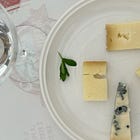





I absolutely loved this -- and wish there was more of this kind of longform journalism out there. Do you have any places that you still recommend for in-depth reporting on wine, but also related topics?
love this article. I always hear the term, that person is a "super taster," and it makes me laugh. knowing full well, it's complete BS. because we're all "super taster." it's all subjective, and all know when something tastes good or bad. it's not being a super taster. picking up distinct notes in a food product really isn't special. after drinking more than 2 oz of wine it just tastes like wine.